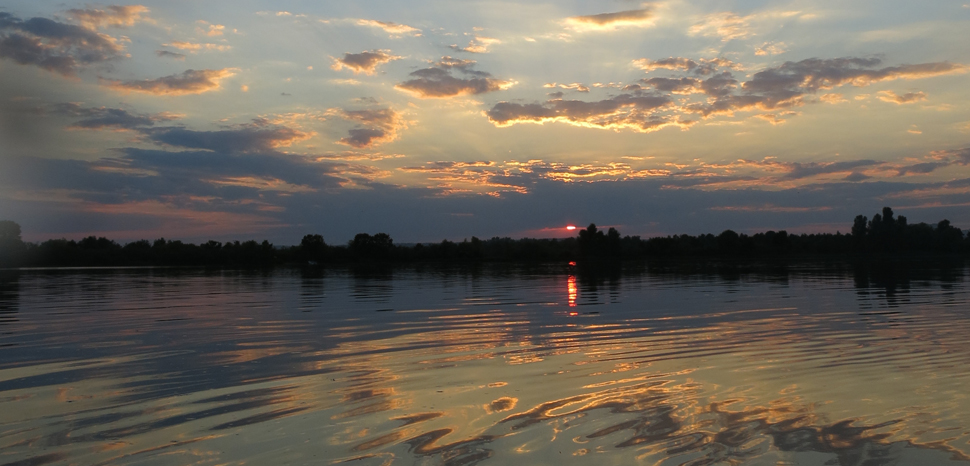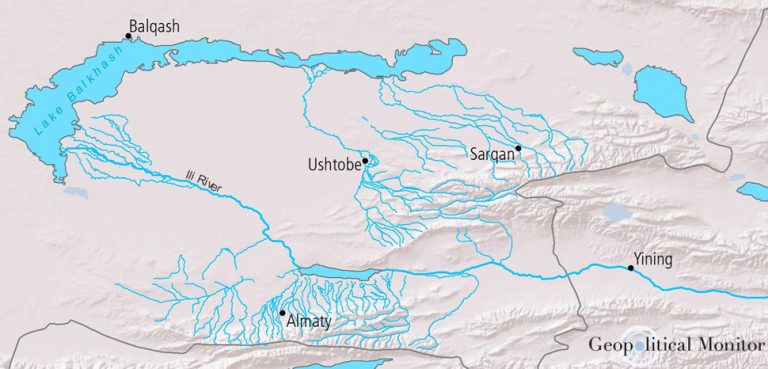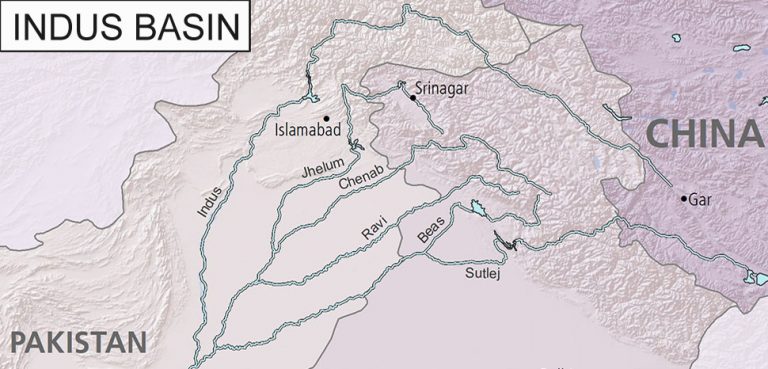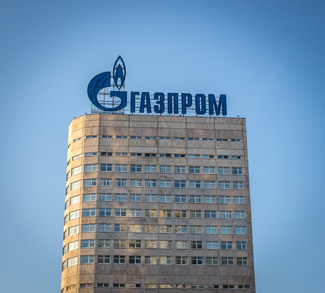In February, the city administration announced that Simferopol, the capital of the Russian-annexed Crimea, had enough water supply to last only 100 days. The water shortage in one of the biggest cities on the peninsula reflects the situation in the entire region. In 2014, in response to the annexation of Crimea, Kyiv decided to cut off the water supply to the peninsula. Chronic water shortages have been an acute problem ever since.
Crimea has always depended on the water supply from the mainland. The 400-kilometer-long North Crimean Canal (NCC) carried water from Ukraine’s biggest river, Dnipro, to the peninsula. Before the occupation, the canal provided 85% of drinkable water to Crimea.
Today, the water crisis affects all facets of life on the peninsula. It has become a source of tension not only between Moscow and Kyiv but also within the Ukrainian government itself. The crisis has gradually transformed the peninsula, creating challenges to the eventual reintegration of Crimea back into Ukraine.
Impact on civilians
Without water from the mainland, Crimea has to rely on its own water resources to support the local population. The peninsula has 23 reservoirs, with 15 in-stream and 8 off-stream reservoirs. The latter used to receive water from the North Crimean Canal. Now they are filled with water from rivers and wells. While the local water resources are limited, for the last six years they provided enough water to meet the needs of the local population.
However, without a stable water supply from the mainland, the peninsula and its water resources are heavily affected by weather conditions. In 2018, after a severe drought, one of the largest rivers of Crimea, the Biyuk-Karasu, dried up. This year, due to a second consecutive winter with low snowfall, several reservoirs supplying water to the major cities on the peninsula stand almost empty.
In February 2020, local authorities reported that the regional capital, Simferopol, was facing a water shortage. The three reservoirs supplying water to Simferopol were at one-third their capacity. At that point, the city’s water supply could only last 90 to 100 days. As a result, the city administration had to introduce water restrictions on residents and local businesses. Currently, water in the city is available only in the mornings and evenings, hot water only during weekends.
Moscow has been making considerable investments to address the water shortages on the peninsula. In 2019, Russia began the reconstruction of the intermountain water reservoir near Simferopol. This water reservoir can ensure uninterrupted water supply to Simferopol, Saky, Evpatoria, and northern Sevastopol. The federal government plans to invest 25 billion rubles ($390 million) into this project. Furthermore, in March 2020 the Russian authorities announced their intention to invest 3.5 billion rubles ($45 million) into the construction of water treatment and desalination plants across Crimea.
The purpose of these ambitious projects is not only to meet the water demand of Crimea’s civilian population. Russia also needs water for its naval base, as well as to support the growing defense industry on the peninsula.
Following the annexation, Russia has been increasing its military presence on the peninsula. In 2014, there were 12.5 thousand Russian military personnel on the peninsula. In 2019, the number increased up to 31.5 thousand. According to the norms of the Russian Ministry of Defense, such number of personnel requires around 2.6 million cubic meters of water per year. This number doesn’t take into account the members of military families that arrived to the peninsula, as well as water needed for other purposes, for instance, cleaning the military equipment or preparing the engine cooling systems.
Impact on agriculture
Before the 1960s, the large part of the peninsula stretching from the Isthmus of Perekop in the north to Simferopol in the south was completely unsuitable for agriculture. It was an arid steppe with salt marshes. The construction of the North Crimean Canal that brought Dnipro water to the peninsula transformed the land.
A steady water supply allowed to wash down the salt in the ground and saturate the soil with moisture. This process made the land suitable for agriculture allowing the local farmers to grow crops and vegetables on now fertile ground. The disruption of water supply in 2014 had an immediate effect on the agricultural sector. In 2013, the amount of irrigated land suitable for cultivation reached 130 000 hectares. In 2017, it shrunk down to 14 000 hectares. The problem was most acute in eastern Crimea, where the amount of irrigated land decreased by 92%. Many people employed in the agricultural sector lost their jobs as a result. Without irrigation, Crimean soil starts to degrade, returning to the state it was in before the construction of the NCC – semi-desert.
To deal with the water shortages the new authorities started drilling wells to use underground water for irrigation. This method, however, is counterproductive. The active extraction of fresh underground water leads to its replacement by salty water that surrounds the peninsula on all sides. Rain and snowfall are not sufficient to replenish groundwater resources. Therefore, the excessive use of underground water for irrigation only accelerates soil salinization making the land unsuitable for agriculture.
This process is reversible. Technically, if the water supply is renewed, Ukraine can repeat the process of soil desalinization that Crimea went through back in the 1960s. However, it is a costly and time-consuming process. When the North Crimean Canal was constructed, it took around 10 years to prepare Crimean soil for cultivation.
Other factors that undermine the Crimean agricultural sector include local weather conditions and the distribution of remaining water resources. In 2018, Crimea was hit by a severe drought provoked by a lack of precipitation. The dry fall and winter of 2019/2020 promise another difficult year for local farmers. The agricultural sector suffers further losses as the much-needed water supply is being diverted to meet the needs of the Crimean industry. In 2013, the industrial sector consumed around 12% of the water supply, in 2015 this number grew up to 50%. The increase in industrial water consumption occurs at the expense of the agricultural sector.
Impact on demography
The water crisis in Crimea is not severe enough to trigger a mass migration. However, to understand the potential impact of water shortage on the peninsula’s demographic, it is important to turn to history.
Before the construction of the NCC, most of the local residents lived in the cities near the seashore. The rest of Crimea was a sparsely populated arid steppe. As Crimean land was made suitable for cultivation, more and more people were attracted by the new prospects opening up on the peninsula. Gradually, this region became densely populated.
Now there is an opposite dynamic. As the agricultural sector shrinks, residents of the steppe region lose their jobs and are forced to leave the area. Within the last 5 years, the cost of housing in the steppe areas fell down to $1.5 – 2 000 per house. Without water, this region will gradually return to its original state of half-desert. If the water crisis in Crimea isn’t solved, locals will have no other choice but to leave.
To put things in perspective, before the construction of the NCC, in the 1950s the population of Crimea was 1.1 million, as opposed to 2.4 million in 2014. Naturally, water supply from the mainland was not the only factor that contributed to this growth. However, steady water supply did create new opportunities on the peninsula, opportunities that were not possible without it.
Impact on ecology
Lack of water takes a heavy toll on Crimea’s ecosystem. In 2018, the Ministry for Temporarily Occupied Territories and Internally Displaced Persons of Ukraine released new maps based on satellite imagery demonstrating the record decline of vegetation in the northern, eastern, and western parts of Crimea. The impact of water shortages is aggravated by rapid soil salinization. Especially in the eastern part of Crimea, plants and trees gradually dry out and die because of increasing soil salinity.
Water shortages can also lead to industrial accidents. Crimea is home to large chemical enterprises, such as the Crimean Titan in Armyansk, as well as Crimean Soda Plant and Brom in Krasnoperekopsk. They all require big amounts of fresh water to operate safely.
In 2018, water shortage caused a chemical accident at the Crimean Titan. The plant stored its production waste in a special acid reservoir, where the waste was diluted with a large volume of water. After annexation, when the water supply was cut off, the reservoir started to dry up, gradually shrinking from 30 million cubic meters to less than two. In 2018, due to lack of water, the reservoir started releasing sulfur dioxide into the atmosphere. The emission of harmful chemicals into the air forced the local authorities to evacuate more than 5,000 people from the area.
In March 2019, air pollution was once again reported in Armyansk, as well as in Krasnoperekopsk where another chemical factory, the Crimean Soda Plant, is located. In Armyansk the concentration of hydrogen fluoride in the air reportedly exceeded the norm by 1.8 times; while in Krasnoperekopsk the level of hydrogen chloride exceeded the norm by 4.4 times. Local authorities gave no viable explanation regarding the source of harmful emissions.
While water shortages can lead to serious accidents at Crimean chemical plants, these enterprises are unlikely to be shut down. They are big taxpayers and are often the only work source for the locals. In addition, both Crimean Titan and Crimean Soda Plant belong to Dmytro Firtash, Ukrainian oligarch known for his pro-Russian views. Following the annexation, his factories were reregistered under Russian law and continued to operate on the peninsula.
Impact on economy
Each year water shortages cost the Crimean economy an estimated 14 billion rubles ($210 million). Some aspects of this crisis are fairly straightforward, for instance, the impact on the agricultural sector that suffered tremendous losses after the water supply from the mainland was cut off. In other cases, however, it is difficult to understand the impact of the water crisis on the local economy without putting things into context.
Lack of water aggravates an already difficult economic situation on the peninsula. One of the major constraints hampering the regional economy is Western sanctions imposed following the annexation. In the last six years, regional foreign trade suffered considerable losses. Compared to pre-annexation, Crimean exports have fallen by 28 times, and import by 35 times. The import of goods from Crimea and Sevastopol was banned. Many foreign investors escaped the peninsula to avoid trouble with their businesses in Europe.
Tourism, one of the main income sources for the locals, suffered several shocks. Following the annexation, Crimea experienced a sharp drop in the number of visitors, as the largest share of tourists coming to the peninsula were Ukrainians. The sanctions have aggravated the situation allowing Crimean cities to accept only domestic flights. According to the estimates, in comparison with 2013, the number of visitors to the peninsula has decreased by up to 50%. The tourism sector is further undermined by water shortages that forced Simferopol to limit water consumption this year.
Moscow allocated considerable funds to support the local economy and assist in regional development. In the period between 2014-2022, total Russian investments in Crimea are expected to reach an estimated $15 billion. Part of this money, as was mentioned above, has gone into solving the water crisis. Apart from that, Russian investments helped improve Crimea’s energy self-sufficiency; to develop a complex system of communications and logistics, including airports, railways, natural gas and electricity networks; as well as to restore and enhance its military presence on the peninsula. In addition, Moscow heavily invested in such major infrastructure projects as the Tavrida highway and Kerch Strait Bridge.
It is difficult to estimate to what extent these investments compensate for the losses suffered by the local economy as a result of occupation, sanctions and water shortages. In the years after annexation, Crimea experienced an 18% increase in average salary. However, the increase in wages has been accompanied by a 200% increase in the price of consumer goods and services, as well as a rapid depreciation of the ruble. Between 2013 and 2016, the average nominal salary changed from 10,683 RUB (3,561 USD) up to 24,200 RUB (3,623 USD), which represents only 2% growth. Crimea currently ranks 56th among Russian federal subjects with the unemployment rate of 5.9% compared to 5.7% in 2013.
Russian sources indicate that Crimea’s economy continues to grow. However, the lack of data makes it difficult to compare the state of the local economy before and after annexation. Two things about the current economic situation on the peninsula remain clear. Firstly, despite considerable investments to resolve it, the water crisis continues to put pressure on the local economy. Secondly, Crimea heavily depends on Russian subsidies, which in itself carries additional risks. Falling oil prices, depreciation of the ruble, coronavirus – all these will take a heavy toll on the Russian economy. It remains to be seen what exactly will happen to Crimea if Russia, due to the economic crisis, will have to cut its investments in the region.
Political tensions surrounding the water crisis in Crimea
As the water crisis in Crimea continues to escalate, questions are raised whether Ukraine should consider restoring water supply to the peninsula.
The official position of the President Volodymyr Zelensky on renewing water supply to Crimea is straightforward – no water until de-occupation. This decision stems from the following considerations. Firstly, the water crisis doesn’t endanger civilians. According to the estimates, water resources available on the peninsula are sufficient to meet the needs of the local population. Secondly, it is believed that the resumption of water supply will only extend the occupation. Water from Ukraine will be used to support Russian military bases on the peninsula. Once Russia can cut its expenditures on water provision, it will be able to invest more in the enhancement of its military presence in Crimea.
The ultimatum, no water until de-occupation, resonates with many politicians, experts and the general public across the land. It is a common opinion that if Kyiv gives water to Crimea before the de-occupation or at least before Russia officially acknowledges the occupation, the resumption of water supply would amount to de facto recognition of Russian authority in Crimea. It would undermine Ukraine’s claim to the peninsula and would be seen as a public betrayal. Furthermore, if Kyiv shows that it is ready to make concessions in regards to Crimea, it might weaken its position in negotiations on Donbas.
While the president has repeatedly stated his position on the issue, several members of the parliament have publicly supported the resumption of water supply to Crimea. Among them are prominent MPs from the president’s party – “Servant of the People.”
In early February, Yuriy Aristov, MP from the “Servant of the People” faction and head of the budget committee, stated that the prospect of selling water to Crimea was discussed during the budget formation. Later on, Aristov apologized for his comment, clarifying that it was just an idea with no particular actions behind.
On February 11, David Arakhamia, head of the “Servant of the People” faction in Parliament, suggested that the resumption of water supply to Crimea can be used in negotiations on Donbas. In the face of public criticism, he later apologized for his comment.
A few months later, in March Ukraine’s new Prime Minister Denys Shmyhal also publicly proposed to renew water supply, citing the worsening humanitarian situation on the peninsula as a reason. Facing a backlash for his statement, the prime minister later clarified that his comment was taken out of context and that the water supply wasn’t possible until de-occupation.
Mixed signals coming from the ruling coalition in regards to the resumption of water supply give rise to many questions. Is it just another example of political backstabbing and lack of party unity or is there more to this situation than meets the eye? In March, Ukrainian journalist Yurij Butusov citing unnamed sources claimed that the resumption of water supply to Crimea was one of the key conditions set by Vladimir Putin for progress toward peace in Donbas. Some speculate that President Zelenskyy is preparing public opinion for a potential trade-off with Putin.
Technical problems
Public and political opposition is not the only obstacle to the resumption of water supply to Crimea. There are also several technical obstacles.
In 2014, following the decision to cut off the water supply, the Ukrainian government began the construction of a dam at the border with Crimea. However, the construction was suspended for five years due to the lack of funds. According to Sergey Shevchenko, head of the North Crimean Canal Department, the water supply to the peninsula is currently impossible, because the dam is not completed. An estimated 35 million HRN (around $1.2 million) is needed to finish the construction.
Another problem concerns the North Crimean Canal. Built in the 1960s, the canal is old and worn out. The water pumping stations are still using the engines installed in the 70s. It is a very old equipment that has been used for many years. The canal has to be renovated, which would require considerable investments.
This February, ex-MP Sergey Khlan from the “Solidarity” party revealed that the government is actively considering privatization of the North Crimean Canal. The plan is to merge the NCC with another major canal in Kherson Oblast into a single public joint-stock company “Tavriya Waters,” which would facilitate the water supply to Crimea. Currently, the NCC is state-owned. However, last year the taboo on the privatization of the canal was lifted. The government has also launched an audit of the irrigation assets in Kherson Oblast. Technically, if the dam is completed and the North Crimean Canal is privatized, the water supply to Crimea can be resumed. The possibility that the NCC might end up in private hands causes public concern.
Final remarks
The water crisis in Crimea has become a serious dilemma for Kyiv. If Ukraine chooses to renew the water supply now, it may never get the peninsula back. If it chooses to wait, Ukraine will turn into a silent observer watching how Crimea transforms, each transformation creating additional challenges to the reintegration of the peninsula back into Ukraine. If Crimea returns to the state it was in before the construction of the NCC, it will take considerable efforts, time, and money to rehabilitate the peninsula.
Russia is likely to continue investing in Crimea as long as its military base is stationed there. However, Russian subsidies are not sufficient to counter the effects of water shortages on the peninsula. The water crisis in Crimea is a geopolitical issue that can’t be solved by pouring endless funds into it.
As the confrontation between Russia and Ukraine continues, negotiations over the Crimean water crisis remain at an impasse. While each side waits for the other to give in, the situation in Crimea continues to deteriorate.
*This article was originally published on April 14, 2020.




